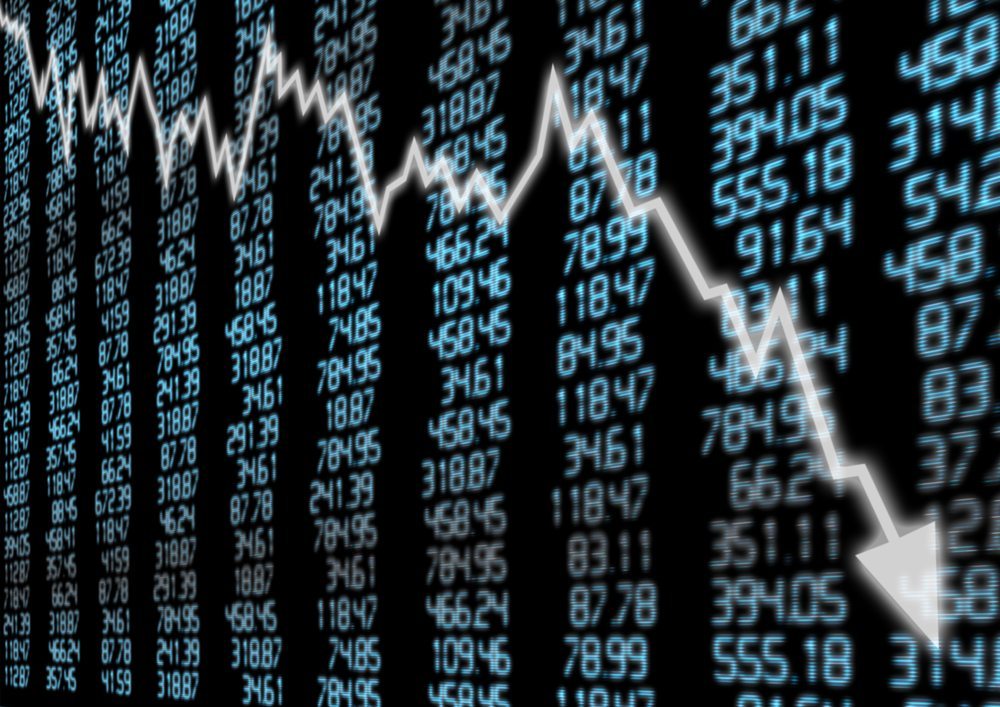
As we addressed in this article, the floor fell out of global stock markets on Monday. Spurred by an equities market crash in China, UK and then US markets opened into decline. Some of the major indices recovered throughout the latter half of the day to register only single digit percentage overall declines – the Dow Jones Industrial Average (INDEXDJX:.DJI), FTSE 100 (INDEXFTSE:UKX) and the NASDAQ Composite (INDEXNASDAQ:.IXIC) – but the slide has no-doubt ravaged individual portfolios. Further, a slide into yesterday’s close in the US suggests we will open into further weakness this morning. The question now, is will this be looked back upon as the beginning of a longer-term bear market, or is it merely an (albeit) severe short-term correction. Additionally, if the latter of these two proves the case, is there a buying opportunity to be taken? Let’s have a look.
First, let’s consider the argument for a longer-term downturn. Basically, China has looked like it is in some trouble for at least the last few months, and probably more. Growth is down – as low as 4% by some estimates – and both individual and private appetite for taking on debt is almost non-existent. The Chinese government has taken some drastic measures recently to try and avoid yesterday’s collapse, including halting trading and devaluing its currency, but so far these measures have proven futile. So why is it such a big deal if China slows? Well, China is a large-scale exporter, but also imports heavily. However, in a bid to balance trade, the Chinese government has leaned towards reducing imports and increasing exports over the last 12 months. This was one of the primary drivers behind the devaluation of the yuan we saw earlier this year. This shift has led to some big changes in import revenues for key developing trade regions globally, however. This year alone, Chinese imports from the EU have declined nearly 13%. From Australia, more than 25%. Additionally, many developed nations and the vast majority of Asian nations rely heavily on Chinese demand for their commodities. South Africa has seen a 40% dip in its exports to China over the last six months. It is this sort of global withdrawal of resource driven capital that can filter through to wider negative implications.
However, of course, there is also an argument for the opposite situation. News media has also widely reported over the last few weeks that the US Fed could be looking to hike its base rate at the end of September. The implications of this are double edged – first that it allows the US to regain some element of control of its current monetary situation. Second, that higher borrowing costs could cripple already weak growth. The fact that this Chinese (and wider) equities market decline has happened now may be the factor that forces the Fed to change its mind. Elsewhere, the situation is similar. Japan, the UK and Europe are all looking at tightening monetary policy near term (i.e. before the end of the year) and this current situation may translate to a global period of extended loose policy. We are already overheated in major markets, so this is a dangerous approach as we are suggesting a reflation of what are already bubble proportions in many industries – but from a medium term profiteering perspective – is this such a big deal? Longer term, yes. Near term, all it means is there may still be some of the ride left in the latest bull market. Of course, the trick will be knowing when to get off. As yesterday’s action shows, things can turn around quicker than we thought possible.
So that’s where things stand. We could be headed for the next recession regardless of response, but there is a chance that the US interest rate hike has the potential to be the deciding factor in medium term global conditions. In other words, let’s see what Yellen does. At this point, her response looks more important than the short term participant response to an equities market crash.




